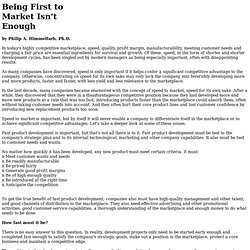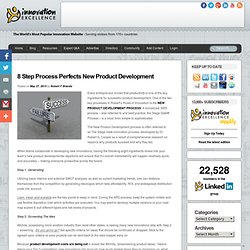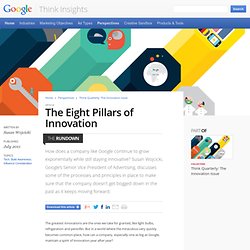

New Product Development (NPD) as a Key Business Process. A common misconception is that new product development (NPD) is strictly the responsibility of an organization’s technical staff who are typically part of the R&D or engineering functional group.

Many senior managers or business owners, those responsible for the financial performance of their businesses, believe the following: “If only R&D could just deliver products faster, meet their schedules, work harder, and stop talking about project risk, then new products could deliver the growth necessary!” If that is how innovation is viewed in your company, then likely senior management does not understand either the nature of new product work or that NPD and innovation management in general are key business processes, not just an R&D function. Consider this: new product development is the most complex of all business processes. The NPD framework proposed in the figure to the right illustrates the complexity of the process.
In an excellent book (1) by Marvin L. Notes: (1) Marvin L. New Product Development. By Philip A.

Himmelfarb, Ph.D. In today's highly competitive marketplace, speed, quality, profit margin, manufacturability, meeting customer needs and charging a fair price are essential ingredients for survival and growth. Of these, speed, in the form of shorter and shorter development cycles, has been singled out by modern managers as being especially important, often with disappointing results. As many companies have discovered, speed is only important if it helps confer a significant competitive advantage to the company.
Otherwise, concentrating on speed for its own sake may only lock the company into feverishly developing more and more products, faster and faster, with less yield and less relevance to the marketplace. In the last decade, many companies became enamored with the concept of speed to market, speed for its own sake. Fast product development is important, but that's not all there is to it. How fast must it be? A parallel approach. [Paul_Trott]_Innovation_Management_And_New_Product(BookFi.org) [Ph.D,_CEO_Robin_Karol,_Co-Director_Beebe_Nelson]_(BookFi.org) 8 Step Process Perfects New Product Development.
Every entrepreneur knows that productivity is one of the key ingredients for successful product development.

One of the two key processes in Robert’s Rules of Innovation is the NEW PRODUCT DEVELOPMENT PROCESS. A formalized, NPD process – also referred to and best practice: the Stage Gate® Process – is a must, from simple to sophisticated. The New Product Development process is often referred to as The Stage-Gate innovation process, developed by Dr. Robert G. Cooper as a result of comprehensive research on reasons why products succeed and why they fail. When teams collaborate in developing new innovations, having the following eight ingredients mixed into your team’s new product developmental repertoire will ensure that it’s overall marketability will happen relatively quick, and accurately – making everyone productive across the board.
Step 1: Generating Lean, mean and scalable are the key points to keep in mind. Step 2: Screening The Idea Step 3: Testing The Concept Step 7: Commercialize. The Eight Pillars of Innovation. The greatest innovations are the ones we take for granted, like light bulbs, refrigeration and penicillin.

But in a world where the miraculous very quickly becomes common-place, how can a company, especially one as big as Google, maintain a spirit of innovation year after year? Nurturing a culture that allows for innovation is the key. As we’ve grown to over 26,000 employees in more than 60 offices, we’ve worked hard to maintain the unique spirit that characterized Google way back when I joined as employee #16. At that time I was Head of Marketing (a group of one), and over the past decade I’ve been lucky enough to work on a wide range of products. Some were big wins, others weren’t.
What’s different is that, even as we dream up what’s next, we face the classic innovator’s dilemma: should we invest in brand new products, or should we improve existing ones? Have a mission that matters Work can be more than a job when it stands for something you care about. Think big but start small.